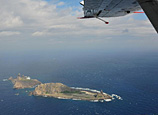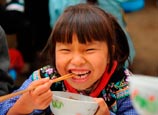
The school made a breakthrough the 1980s, when it incorporated watermark printing.
Beidahuang prints' growing popularity during this period inspired artists in nearby cities to also start creating them.
Zhang says Heilongjiang now has 10 groups and more than 200 artists dedicated to prints.
Primary schools in some communities teach printmaking in fine arts classes.
The exhibition also presents contemporary prints by artists with academic backgrounds, who have enriched Beidahuang's art.
"Their works convey their thoughts about culture and the environment," Zhang says. "They invite viewers to discuss social issues."
NAMOC's director Fan Di'an says the exhibition narrates prints' rise as an important cultural phenomenon in Heilongjiang and a vehicle of modern Chinese culture.
"People can see in those prints that the Great Wilderness (now a national grain-production base) has become the 'great beauty'," he says.
The exhibition also celebrates the 50th anniversary of the provincial Heilongjiang Art Museum's founding. The displays constitute only a small slice of its collection.
Zhang says about two-thirds of the museum's 6,000 pieces are prints, and about half of its annual events are related to prints.















 Residential building collapses in E China's Ningbo
Residential building collapses in E China's Ningbo


![]()
